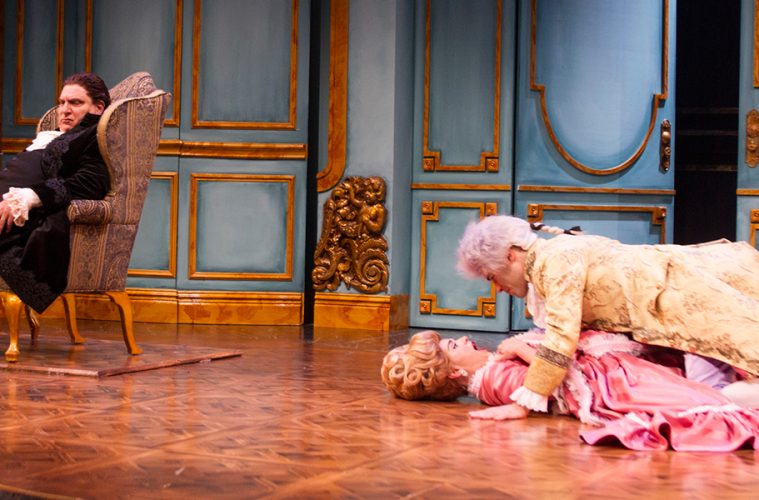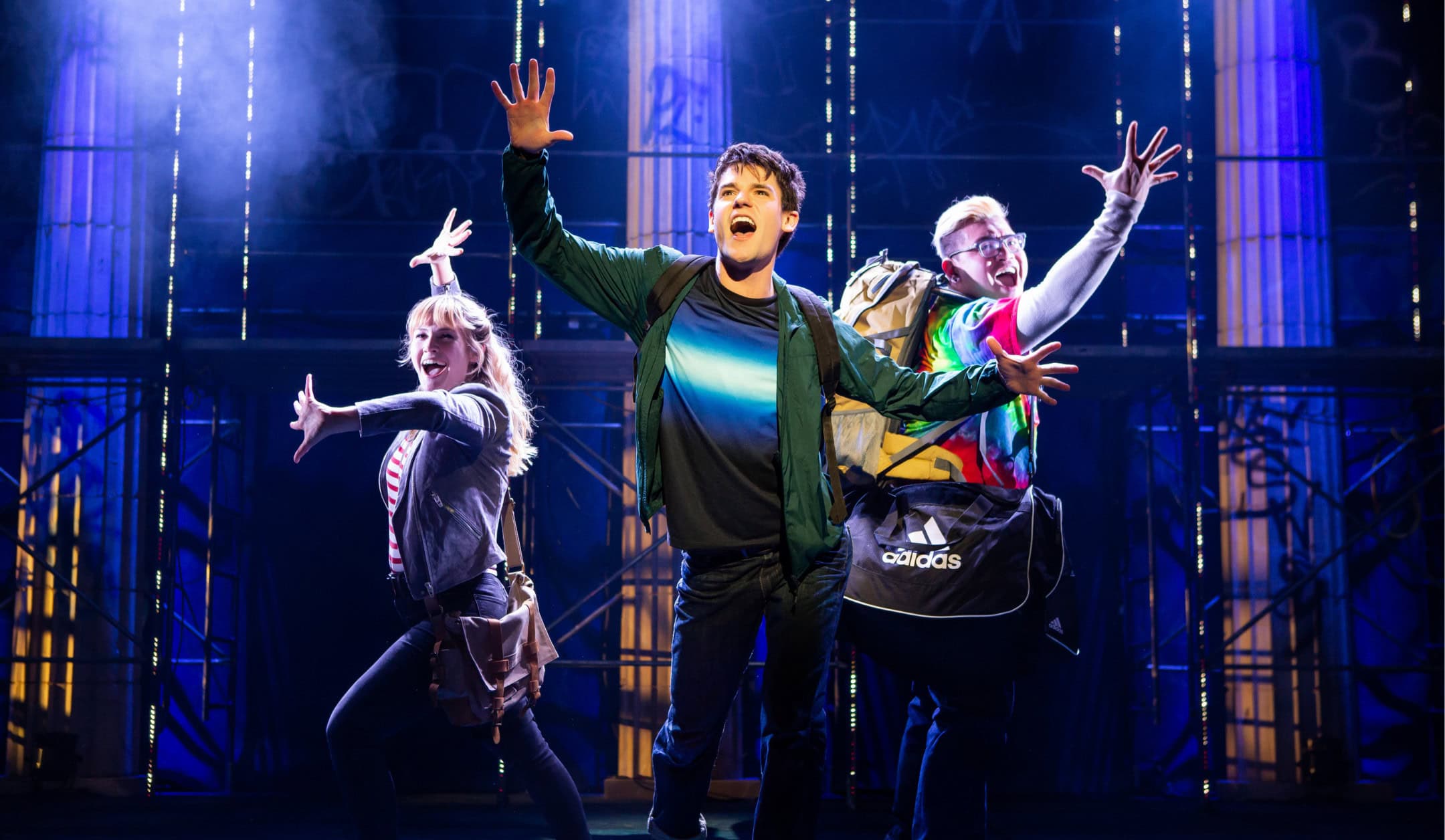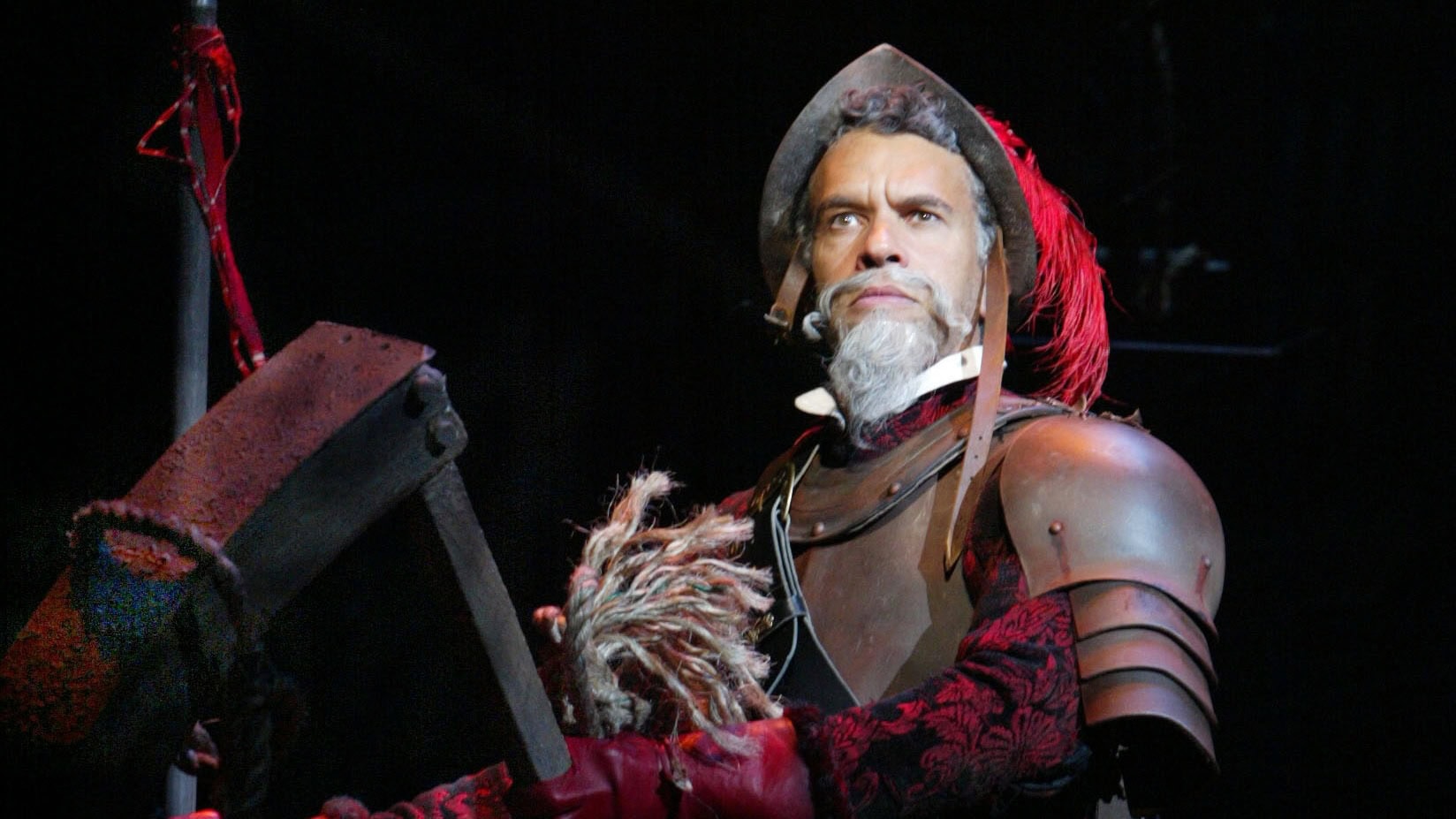
Kent Nicholson takes a moment to think about the nearly four-decade popularity of Peter Shaffer’s Amadeus: “While the play is epic in scope, it’s also a very personal story,” he says. “And I also think passion, lust and lust for power resonate with audiences!” he adds, laughing. He will direct Shaffer’s play, which concludes South Coast Repertory’s 2015-16 season (May 5-June 6, 2016).
Since its 1979 London debut (with a first SCR production in 1983), Amadeus has drawn in audiences through Shaffer’s simple, yet powerful storytelling. (See the synopsis, right).
We asked Nicholson to talk more about Amadeus.
Why does the play remain popular?
One of the themes in Amadeus is transition. The late 18th century was a huge period of political transition and transformation: the American Revolution had just happened, the Austrian Empire was starting to collapse and other revolutions—including the French Revolution—were sweeping Europe. I think our world today reflects some of that transition and transformation, so I don’t think it’s an accident that this play keeps coming back.
Mozart himself stood at a time of transition in the arts, when people’s thinking began to change about art, life and what has value. He actually ushered in the Romantic era, but we don’t think of him in that way; we think of Beethoven as the first Romantic, but he was Mozart’s student.
There’s also something universal about how Antonio Salieri experiences the world in the play and his potential for mediocrity. The play talks about two choices that everyone has: to recognize the future and embrace it or recognize the future and destroy it. I think Salieri recognized the future—the transition that was coming—didn’t know what to do with it and so he tried to destroy it.
Was Mozart a rock star in his time?
He was a rock star as a child prodigy when he toured Europe, but that may have been more about the novelty of watching an eight-year-old play the keyboard. Mozart often was rejected during his lifetime and died relatively poor, at the age of 35. After his death, his wife began selling his works and when people began to rediscover his music, he became wildly popular.
Mozart is more like Vincent van Gogh or Jeff Buckley, both of whom became more famous after their deaths.
What’s the difference between the film and the play?
They tell the same story, but they don’t use the same script. Film director Milos Forman didn’t use the play script, he adapted it and used all the tools of cinema to create some spectacular visuals—like Mozart’s opera, Don Giovanni.
In the stage version, we’re much more inside Salieri’s head and that lets us use all the tools of theatre for visual storytelling with an emphasis on the words. Costume and set changes help us move through time, from Salieri as an old man to his younger self, a contemporary of Mozart. The cast is smaller—just over a dozen actors—and we have some actors playing multiple roles. Music, of course, is important and it is woven throughout the play.
What can you tell us about the creative designs for SCR’s production?
I direct a lot of musicals and what I enjoy is the pure emotional experience those bring [Editor’s note: Nicholson’s last SCR production was The Light in the Piazza]. To me, Mozart’s music is some of the most beautiful ever, so we’re being given the opportunity to shape the full experience of the play by weaving the music through it. While it’s not a musical, it functions like one, which is another reason that I wanted to direct Amadeus.
The set will have realistic elements and also things that hint back to theatre design of that era. There are about 80 costumes and they will be accurate, historical representations of the time period. They will help tell the story visually by indicating where the story is in time, taking us from the 1820s when Salieri is an old man back to the 1780s. In that 40-year-span, fashions and culture changed dramatically.
Can you tell us about the play’s humor?
I think people will be surprised by how funny, Amadeus is! This is not a farce, with comic bits and set-up pieces; the humor comes from human folly, like members of the royal court whose own sense of self-importance becomes completely ridiculous. Mozart’s childishness also is appealing, but that is part of what destroys him. I think that to make people have a profound experience, they have to laugh first.
What do you want audiences to take away?
I want people to feel that they’ve experienced something extraordinary. Amadeus is at the same time a spectacular but very human play. We don’t see those two things working together very often in theatre. That’s what theatre does very well: turns the personal into something more.
Give us three words that describe Amadeus.
Love, jealousy and murder (laughing).
Reprinted with permission from South Coast Repertory.
Photo: Marco Barricelli, Liesel Allen Yeager and Asher Grodman. Credit: Debora Robinson/SCR.
To purchase a copy of Amadeus click here, and to learn more about licensing a production, click here.

QUIZ: Which Character from The Lightning Thief Are You?

“The Impossible Dream” – An Anthem of Hope

